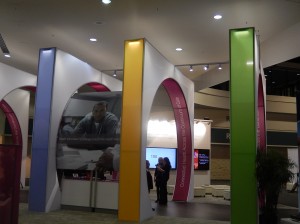Mar 23
2015
The Future of Healthcare Innovation, Big Data, Security and Patient Engagement
HIMSS organizers, in preparation of its annual conference and trade show and as a way to rally attendees around several trending topics for the coming show, asked the healthcare community how it feels about several key issues. I’ve reached out to readers of this site so they can respond to what they see as the future of healthcare innovation, data security, patient engagement and big data.
Their responses follow.
Do you agree with the following thoughts? If not, why; what’s missing?
Innovation

Sean Benson, vice president of innovation, clinical solutions, Wolters Kluwer Health
Future innovations in health IT, big data in particular, will focus on the aggregation and transformation of patient data into actionable knowledge that can improve patient and financial outcomes. The ever-growing volume of patient data contained within disparate clinical systems continues to expand. This siloed data often forces physicians to act on fragmented and incomplete information, making it difficult to apply the latest evidence. Comprehensive solutions will normalize, codify and aggregate patient data in a cloud system and run it against clinical scenarios to create evidence-based advice that is then delivered directly to the point of care via a variety of mobile devices. This will empower physicians with patient-specific knowledge based on the latest medical evidence delivered to the point of care in a timely, appropriate manner, ultimately resulting in higher quality treatment and more complete care.

Susan Reese, MBA, RN, CPHIMS, chief nurse executive, Kronos Incorporated
Gamification — the trend of creating computer-based employee games and contests for the purpose of aligning employee productivity with the organization’s goals — is currently a popular topic with business leaders and IT. For proof, consider that Gartner recently projected that by 2015, 50 percent of all organizations will be using gamification of some kind, and that by 2016, businesses will spend a total of $2.6 billion on this technology.
With numbers like these, it is clear that that gaming is serious business and that it is here to stay. But at this point, you may be asking yourself, “Could gamification work in my healthcare environment? What potential benefits could it have?””
Today, many healthcare organizations are looking to the future and considering gamification as a way to increase employee engagement, collaboration, and productivity as well as to align their behavior with larger business goals – but they don’t know how to do it quite yet. Also, gamification can be a delicate decision, complete with advantages and risks. After all, employees’ day-to-day work responsibilities and careers are not games and can’t be trivialized. Healthcare organizations must be careful to avoid sending the wrong message to their workforce, or the whole program could backfire, or even lead to more negative consequences.

Mike Lanciloti, vice president of product management and marketing, Spectralink
In today’s digital age, healthcare IT needs to come a long way to get up to speed in innovation and connectivity. However, as we begin to see mobile play a larger role in the industry, healthcare is moving the needle on innovation as well.
The mobile revolution has picked up in healthcare for both health IT professionals and in patient care. Primary as healthcare providers find ways to utilize smartphones, mobile devices and Wi-Fi networks to improve the communication and efficiency of their workforce.
Through mobile devices, clinicians have the ability to access what they need, when they need it. Mobile devices ensure nurses and mobile staff are equipped with the right technology to promote timely, efficient and reliable communication. This not only allows healthcare professionals to perform their jobs more effectively but also helps deliver a higher quality of patient care.
The growing mobile trend does present several questions for the industry. Hospital managers are quickly learning that an influx of smartphones into the hospital setting can become a larger problem than anticipated. Not only do personal devices lack the security required for enterprise-owned devices, they pose other risks, calling into question issues surrounding encryption, authorized access and mobile security. Personal phones aren’t designed to be equipped with the same encryption capabilities as enterprise-owned mobile devices.


